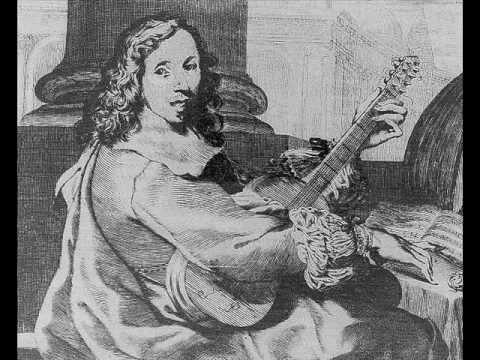Name Giovanni Granata Role Guitar player | Died 1687 | |
 | ||
Similar People Francesco Corbetta, Francesc Guerau, Angelo Michele Bartolotti, Santiago de Murcia, Alessandro Piccinini | ||
Baroque guitar richard mackenzie passacagli alemanda in g minor by giovanni battista granata
Giovanni Battista Granata (1620/1621 – 1687) was an Italian Baroque guitar player and composer. He is generally known as the most prolific guitarist of the 17th century, publishing seven books during his lifetime. Along with many pieces in the standard dance genre of that time, Granata also composed many instrumental toccatas, preludes, and chaconnes. Granata was a barber-surgeon by profession.
Contents
- Baroque guitar richard mackenzie passacagli alemanda in g minor by giovanni battista granata
- Giovanni battista granata toccata
- Biography
- MusicStyle
- Works
- Similarity with 20th century work Stairway to Heaven
- References
Giovanni battista granata toccata
Biography
Granata was born in Turin, but moved to Bologna sometime around 1646 where remained for the majority of his life. From 1651 to 1653, he was employed as liutista sopranumerario in the Concerto Palatino. Although he maintained his teaching and composing career throughout his life, his main employment was as a barber-surgeon for which he became licensed in 1659.
Music/Style
The early baroque guitar works of Granata are characterized by their French organization of dance suites (allemande, courante, and sarabande). His style in the period around 1646 is very similar to that of his contemporary, Giovanni Paolo Foscarini. The works from Granata’s middle period demonstrate his musical evolution and change in style. Many of the pieces are complex and regarded as some of the most virtuosic guitar music of that time. Granata’s later period pushes the instrument even further with extensive use of campanelas, notes in the upper register, and complex rhythms.
Granata's fourth book - Soavi concenti (1659) - is one of the few sources to include pieces for the chitarra atiorbata, a five course instrument with seven open basses.Three of Granata's books also have works for ensemble. The pieces contained in Book IV call for a chamber ensemble of violin, guitar, and basso continuo, Book V for violin, viola, and guitar, and Book VII for guitar and basso continuo.
Works
Granata’s seven books, all published in Bologna, Italy:
Similarity with 20th century work "Stairway to Heaven"
Granata's Sonata di Chitarra, e Violino, con il suo Basso Continuo appeared in a surprising connection with a 1970 rock music work, Stairway to Heaven, by Jimmy Page and Robert Plant of the rock group Led Zeppelin. After Stairway to Heaven achieved tremendous success, a dispute arose about whether part of the work was plagiarised. Commentators cited numerous earlier works with some degree of similarity, including Granata's Sonata. However, similarity was not evidence that Page and Plant plagiarised Granata.
